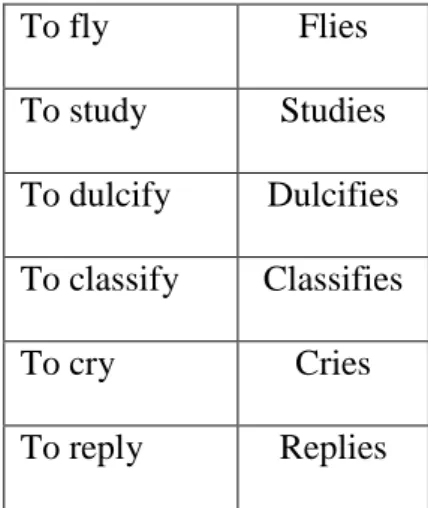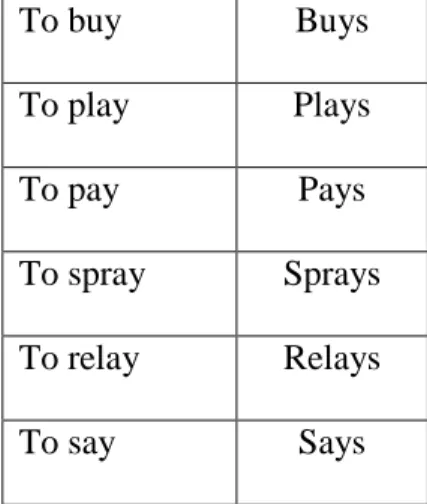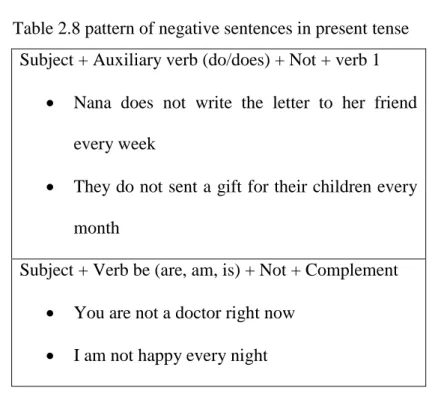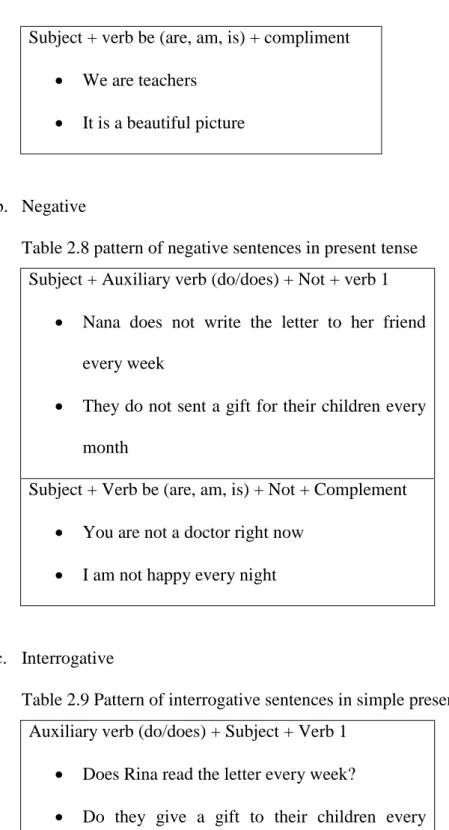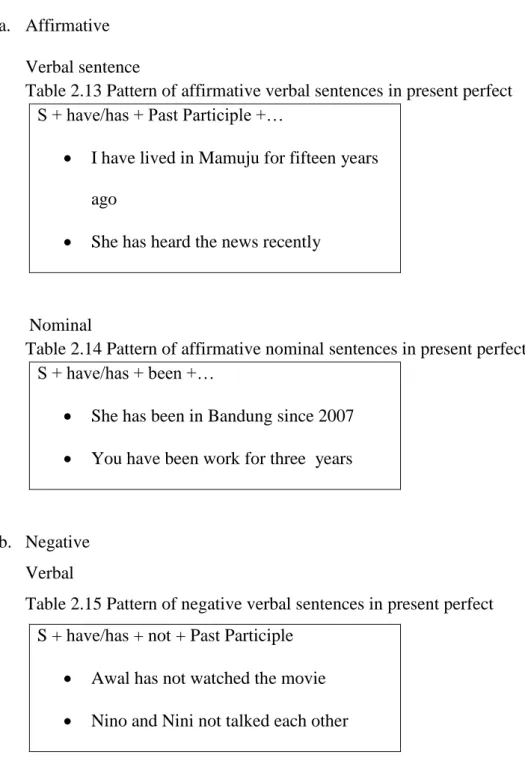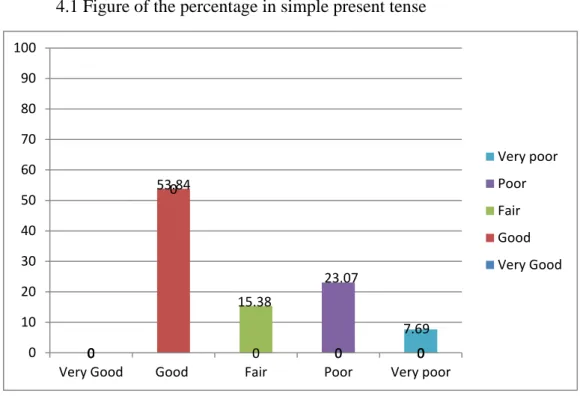The University Students' Ability in Using English Tenses (A Descriptive Research at the First Semester Muhammadiyah University of Makassar). A thesis English Education Department The Faculty of Teacher Training and Education Muhammadiyah University of Makassar. Guided by Sulfasyah and Awalia Azis. This research aimed to find out students' ability to use English tenses focusing on four tenses such as present simple, present continuous, present perfect tense and present perfect continuous tense. The result of this research showed that the students' scores in the first semester Muhammadiyah University of Makassar in the class 1C.
Temuan data menunjukkan skor total siswa ketika menggunakan tenses bahasa Inggris, baik dalam persentase skor maupun skor rata-rata. Kemampuan mahasiswa dalam menggunakan tenses bahasa Inggris (penelitian deskriptif di Universitas Muhammadiyah Makassar semester satu). LAMPIRAN H: PERSENTASE NILAI SISWA DALAM WAKTU TERUS MENERUS SEMPURNA SAAT INI LAMPIRAN I: NILAI TOTAL SISWA DALAM BAHASA INGGRIS.
INTRODUCTION
- Background of the Research
- Research Question
- Objective of the Reseacrh
- Significance of the Research
- Scope of the Research
Many Indonesian students still find difficulty in learning tenses because the students can change the verb form to reflect the time of an event. This research is expected to help the students to give more knowledge to the students, especially in English tenses, through this the students can practice more in the use of tenses and realize that tenses are necessary to learn. This research is expected to help the lecturer to know the students' ability in using English tenses, therefore the lecturer can follow some strategy to develop the students' ability.
In this study, the researcher takes tenses in the present tense because he wants to focus on the students' ability to use English tenses, especially in the present tense.
REVIEW OF RELATED LITERATURE
Understanding the Literature Review
The highest rate of error types is wrong shape with total errors of 257 or 88.02%, the lowest rate of error types is misclassification with total errors of 4 or 1.37%. Based on Richards' theory, the researcher finds that the existence of errors stems from overgeneralization, ignorance of the limitations of rules, incomplete application of rules, and erroneous concepts that are assumed to have the highest level of error causes, erroneous concepts that are assumed to have a common number of errors. is 134 or 45.89%. The fourth was conducted by Hafiz (2016) in his research on the analysis of students' ability to use the simple present tense on first grade students in the 2015/2016 academic year of Mts Ma'rif Jam'iyatul Islamiyah Dasan Baru that this finding shows that the average score of the students .
Students' difficulties in using simple present tense are identified by using students' incorrect answers in multiple choice tests and questionnaire.
Presenting the Literature Review
- The Concept Ability
- The Concept of Tenses in English Language
- Simple Present Tense
- Present Continuous Tense
- Present Perfect Tense
- Present Perfect Continuous Tense
Langan says that the present perfect expresses an action that began in the past and has recently been completed or is continuing in the present. In Oxford, Learner Pocked defines the present perfect as a verb form expressing an action done in a period of time up to the present, formed in English with have/has and participle. This means that the present tense is formed by combining a present form of the auxiliary verb.
Thus, the present perfect can be defined as a tense used to tell about event that has finished with a situation that begins in the past, but the effect can still be experienced until now (continues). The present perfect tense is quite important to learn for students because students need to know the difference between regular and irregular verbs. In the simple word, the present perfect is formed by using the auxiliary verb or have/has and the past participle form of the main verb (the form of regular and irregular verbs) and it is usually accompanied by certain tenses such as and for.
Thomson and Martinet (1986) stated that the present perfect can be used for a kind of mixture of the present and the past, it always implies a strong connection with the present and is mainly used in conversations, letters, newspapers and radio tapes. On the other hand, Swan (1980) stated that some of the uses of the present perfect tense are: . a) The present perfect tense is often used to talk about completed actions and events. It usually happens when past events have some present significance, and when they want to make a sentence in the present tense (with a similar meaning) about the same situation. b) The present perfect is also used to talk about past actions that are not recent but are still with us as part of our experience and knowledge.
According to Thomson and Martinet (1986), the present perfect tense is formed with the present tense of have/has + past participle, because negative is formed by adding not to the auxiliary verb. Allan (1997) argues that the present perfect continuous tense is used to emphasize the duration of ongoing action or activity that begins in the past.
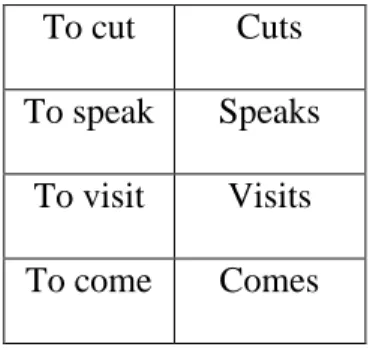
Conceptual Framework
METHODOLOGY
- Research Design
- Research Variables and Indicators
- Population and Sample
- Research Instrument
- Data Collection
- Technique of Data Analysis
To know the result of the test in simple present tense, the researcher gave the score of the students in the table below. Giving the test was one of the ways in which the author could know the students' ability to use the present perfect tense. The data in Figure 4.3 showed how the students got the percentage in the present perfect.
Analysis of the students' score in the present perfect continuous tense. In the present perfect continuous tense, the examiner also gave 10. In the present perfect continuous tense, the examiner also gave 10 questions in multiple choice form. The test was designed to get to know the students. The researcher would like to say that the student's result in the present was perfectly continuous good. Figure 4.5 above shows the overall score percentage of the students using English time.
The data analysis showed that the result of the students when using the simple present tense. The result of the test showed that the students had made some mistakes when using the simple present tense. It meant that the students were better able to use the present tense than the present tense.
In finding the data provided, the students result after taking the test in the present continuous tense. The result showed that the students' ability in using English tenses was in the middle (See Table 3.2).

FINDING AND DISCUSSION
Finding
- Analysis the Students‟ Score in Simple Present Tense
- Analysis the Students‟ Score in Present Continuous Tense
- Analysis the Students‟ Score in Present Perfect
- Analysis the Students‟ Score in Present Perfect Continuous
- Analysis the Students‟ Score in English Tenses
In this section described the result of the data finding found in university students' ability to use English tenses. The students had been given the test by the researcher on November 29, 2018 at Rusunawa A Muhammadiyah University in Makassar. The result of the multiple choice test that was given to the students will be presented in this part.
The test was given to the students in first semester class 1C Muhammadiyah University of Makassar. There were 10 questions multiple choices in simple present tense that had been given to the students. Figure 4.1 showed that students mostly got good classification (53.84%) or it can be said from 26 students there.
Table 4.2 showed the result of the present tense test for each student in class 1C Muhammadiyah University of Makassar. The result of the present perfect test was described in table 4.3 above. On table 4.5 above, showed the students' ability to use English tenses, namely simple present tense, present continuous tense, present perfect tense and present perfect continuous tense.
It can be seen that out of 26 students in class 1C, there was no student with a very poor classification, and mostly the students were in good classification (61.53%). In this part, the researcher calculates the students' score in four tenses namely present simple, present continuous, present perfect and present perfect continuous.

Discussion
- The Students‟ Ability in Using Simple Present Tense
- The Students‟ Ability in Using Present Continuous Tense
- The Students‟ Ability in Using Present Perfect Tense
- The Students‟ Ability in Using Present Perfect Continuous Tense . 39
As a result of the average score, the researcher concluded that the students' ability in using English tenses had a fair classification, with the average score (62.88). In the findings part, the result of students' ability in using the present continuous tense showed that there was one student in the very good classification (3.84%) and no students in the very poor classification. It caused students to make mistakes in the use of ka or has and the infinitive.
Its similarity with Cahyanti (2011) said that students make mistakes using the form of perfect tenses have or have and the use. In the last data analysis in the findings section, the total score for the students in using English tenses showed either in percentage score and mean score. In relation to the data, the reason why the students scored average was in using the form of the verb in tenses.
In addition, the researcher found that the students have average ability in using English tenses because they had misunderstandings in using tense form. The students were less able to use the form either in the auxiliary or verb form. Based on the data, the reason for the average ability of the students was the use of the verb form and the auxiliary in tenses.
An Analysis of Students' Ability to Use Simple Present Tense on First Grade Students in the 2015/2016 Academic Year of Mts Ma'rif Jam'iyatul Islamiyah Dasan Baru.University of Mataram. Developing students' ability to use present continuous tense through contextual teaching and learning in a classroom Research in seventh grade of SMP Al Mubarak PondokAren.
CONCLUSION AND SUGGESTION
Conclusion
Regarding the results and interpretation in the previous chapter, the researcher could draw a conclusion that the first semester class IC of Muhammadiyah University of Makassar with the total number of 26 students have average ability in using English tenses. It saw that there were sixteen students who received a good classification (61.53%) and none who received a very poor classification.
Suggestion
The second was for the teacher: in process learning and teaching, it was better to use different methods and techniques to make students interested and motivated to study. The last one was for the next researcher in another discussion, hopefully this research could be used as a reference. An error analysis in student learning in the present perfect tense (a case study in the first year students of Madrasah Aliyah Soebono Mantofani Jombang-Ciputat). Syarif Hidayatullah State Islamic University.
Problems in Teaching Tenses to Turkish Learners Retrieved from https://www.researhgate.net/profile/Ismail_Cakir2/Publication Problems_in_Teaching_Tenses_to_Turkish_Learners/links/5479c8030cf 205d1687fa913/problems-in-Teaching-Tenses-to-Turkish-Learners.pdf . 2004. Teaching Academic ESL Writing: Practical Techniques in Vocabulary and Grammar: New Jersey: Lawrence Erlbaum Associates, Inc, Publishers. Analysis of Learner's Errors in Using Present Perfect Continuous Tense A Case Study of First Grade Students of SMAN 63 Jakarta.
